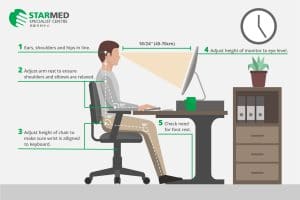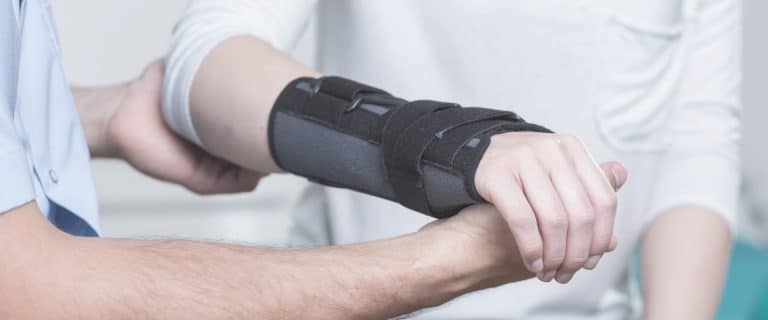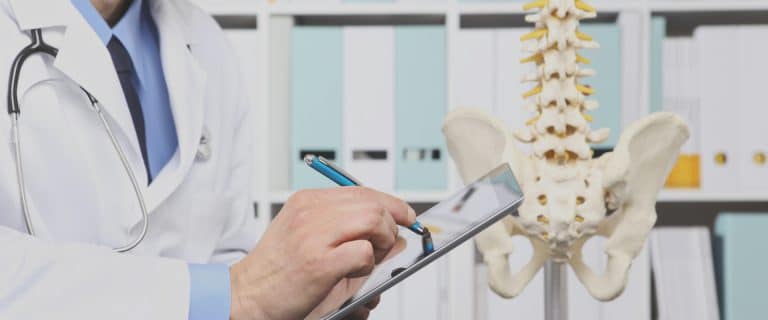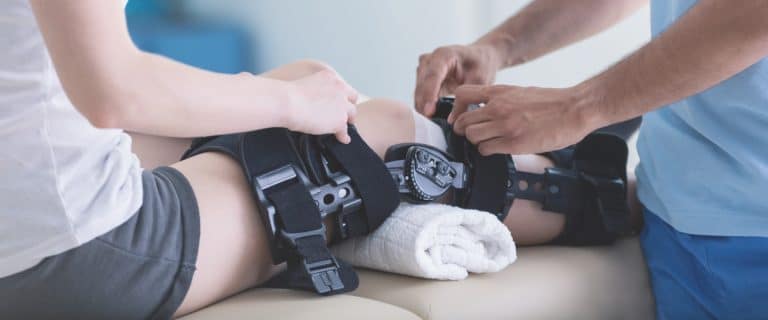Age-Related Bone & Joint Care at StarMed
Singapore has a rapidly aging population. Our life expectancy has improved tremendously over the past decades to hit 85 years. We have more than 1500 centenarians in Singapore today. Knee and hip osteoarthritis are part of aging and is expected to take a significant toll on patients’ quality of life. We strive to improve the life expectancy as well as to ensure that all our patients age gracefully. By maintaining mobility and controlling pain, we aim to restore or maintain our patients’ quality of life even as they age.
Common Age-Related Joint Issues
Knee osteoarthritis is degenerative joint condition where there is a thinning of the cartilage. Knee osteoarthritis is most commonly cause by wear and tear with aging. Knee osteoarthritis can also affect younger patients who have undergone knee surgeries or sustained severe knee injuries. Knee osteoarthritis causes knee pain, swelling, stiffness and deformity. Many individuals eventually have to rely on medications for pain control or walking aids for mobility if the condition is left untreated.
Common symptoms include:
- Knee pain
- Knee stiffness
- Knee swelling
- Knee deformity
- Knee crepitus (noise on bending and straightening the knee)
What can you do about it?
- Physiotherapy, lifestyle modifications, weight loss
- Medications: Panadol, anti-inflammatory medications, anti-inflammatory plasters or gel
- Knee injections
- Gel injection
- Steroid and pain killer injection
- Knee replacement
- Half knee replacement
- Replacement of damaged half of the knee with prosthetic knee components
- Survival rate of 90% in 15 years
- For patient with limited damage and for younger patients, we recommend the half knee replacement procedure
- Faster recovery, more nature knee, lower mortality
- Total knee replacement
- Replacement of entire knee with prosthetic knee components
- Survival rate of 95% in 15 years
- For patients with more extensive damage of the knee and for older patients, we recommend the total knee replacement procedure
- Lower revision rate
- Robotic-assisted knee replacement
- We can perform knee replacement using the latest robotic technology
- Higher precision and accuracy
- Better positioning of components
- Safer
- Allows micro-adjustment of components
- Allows immediate feedback during the surgery
- Half knee replacement
Knee osteoarthritis is degenerative joint condition where there is a thinning of the cartilage. Knee osteoarthritis is most commonly cause by wear and tear with aging. Knee osteoarthritis can also affect younger patients who have undergone knee surgeries or sustained severe knee injuries. Knee osteoarthritis causes knee pain, swelling, stiffness and deformity. Many individuals eventually have to rely on medications for pain control or walking aids for mobility if the condition is left untreated.
Common symptoms include:
- Knee pain
- Knee stiffness
- Knee swelling
- Knee deformity
- Knee crepitus (noise on bending and straightening the knee)
What can you do about it?
- Physiotherapy, lifestyle modifications, weight loss
- Medications: Panadol, anti-inflammatory medications, anti-inflammatory plasters or gel
- Knee injections
- Gel injection
- Steroid and pain killer injection
- Knee replacement
- Half knee replacement
- Replacement of damaged half of the knee with prosthetic knee components
- Survival rate of 90% in 15 years
- For patient with limited damage and for younger patients, we recommend the half knee replacement procedure
- Faster recovery, more nature knee, lower mortality
- Total knee replacement
- Replacement of entire knee with prosthetic knee components
- Survival rate of 95% in 15 years
- For patients with more extensive damage of the knee and for older patients, we recommend the total knee replacement procedure
- Lower revision rate
- Robotic-assisted knee replacement
- We can perform knee replacement using the latest robotic technology
- Higher precision and accuracy
- Better positioning of components
- Safer
- Allows micro-adjustment of components
- Allows immediate feedback during the surgery
- Half knee replacement
Hip osteoarthritis is less common than knee osteoarthritis in Singapore. Nevertheless, it can cause severe pain and stiffness, affecting one’s quality of life. Hip osteoarthritis is a degenerative joint condition whereby there is thinning of the cartilage. Hip osteoarthritis is most commonly cause by wear and tear with aging. Hip osteoarthritis can also affect younger patient who has avascular necrosis of the hip (caused by alcohol, smoking, previous fracture etc), hip dysplasia (developmental problem of the hip) or previous hip injury. Hip osteoarthritis will affect mobility if left untreated.
Common symptoms include:
- Hip pain (localised to groin)
- Hip stiffness (e.g. unable to wear socks)
- Referred pain to knee
What can you do about it?
- Physiotherapy, lifestyle modifications, weight loss
- Medications: Panadol, anti-inflammatory medications, anti-inflammatory plasters or gel
- Hip injection
- Steroid and pain killer injection – use of X-Rays in the Operating Theatre to guide needle into joint
- Hip replacement
- Total hip replacement
- Replacement of damaged hip with prosthetic hip components
- Direct anterior approach for suitable patient
- Smaller incision, muscle sparing, walk on same day
- Use of X-Rays during surgery allows improved positioning of components
- Robotic-assisted hip replacement
- We can perform hip replacement using the latest robotic technology
- Proper positioning of hip component is especially vital for total hip replacement as poor positioning can led to dislocation and increased wear
- Improve precision and accuracy
- Better positioning of components
- Improve safety
- Allows micro adjustment of components
- Allows immediate feedback during the surgery
- Total hip replacement
Hip osteoarthritis is less common than knee osteoarthritis in Singapore. Nevertheless, it can cause severe pain and stiffness, affecting one’s quality of life. Hip osteoarthritis is a degenerative joint condition whereby there is thinning of the cartilage. Hip osteoarthritis is most commonly cause by wear and tear with aging. Hip osteoarthritis can also affect younger patient who has avascular necrosis of the hip (caused by alcohol, smoking, previous fracture etc), hip dysplasia (developmental problem of the hip) or previous hip injury. Hip osteoarthritis will affect mobility if left untreated.
Common symptoms include:
- Hip pain (localised to groin)
- Hip stiffness (e.g. unable to wear socks)
- Referred pain to knee
What can you do about it?
- Physiotherapy, lifestyle modifications, weight loss
- Medications: Panadol, anti-inflammatory medications, anti-inflammatory plasters or gel
- Hip injection
- Steroid and pain killer injection – use of X-Rays in the Operating Theatre to guide needle into joint
- Hip replacement
- Total hip replacement
- Replacement of damaged hip with prosthetic hip components
- Direct anterior approach for suitable patient
- Smaller incision, muscle sparing, walk on same day
- Use of X-Rays during surgery allows improved positioning of components
- Robotic-assisted hip replacement
- We can perform hip replacement using the latest robotic technology
- Proper positioning of hip component is especially vital for total hip replacement as poor positioning can led to dislocation and increased wear
- Improve precision and accuracy
- Better positioning of components
- Improve safety
- Allows micro adjustment of components
- Allows immediate feedback during the surgery
- Total hip replacement
Featured Doctors

Dr Lim Chin Tat
Senior Consultant
Orthopaedic
Other Orthopaedic Topics
Specialist
Packages

Chase that adrenaline rush: 5 unique sports activities in Singapore for weekend fun
Enjoy thrilling sports activities in Singapore and bag tips from an expert on how to safeguard yourself from a muscle strain or pull.

A Joint Effort
Like many people, you may not give bone and joint health much thought until you experience pain or other problems.

Everyday Habits Harming Your Joints
Whether you realise it or not, what you do – and don’t do – every day can have a huge impact on your joint health. Here, orthopaedic and physiotherapy experts share five ways you could be harming your joints – and what to do differently.
Orthopaedic Treatment in a Time of Crisis
The Circuit Breaker period has seen many lifestyle changes among Singaporeans due to the Circuit Breaker measures implemented by our government.

Ergonomic Care While Working From Home
Ergonomic is the field of science that focuses on improving the work environment to optimise efficiency and comfort at work. Ergonomic care also aims to minimise injuries to the body and to maximise productivity at work.
Anterior Cruciate Ligament Injuries – What You Need to Know
The anterior cruciate ligament (ACL) makes up one of the 4 main ligaments of the knee. In fact, it is the most important and commonly injured ligament, accounting for almost half of knee injuries worldwide.









